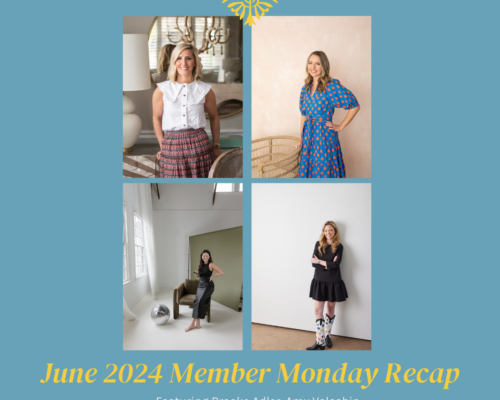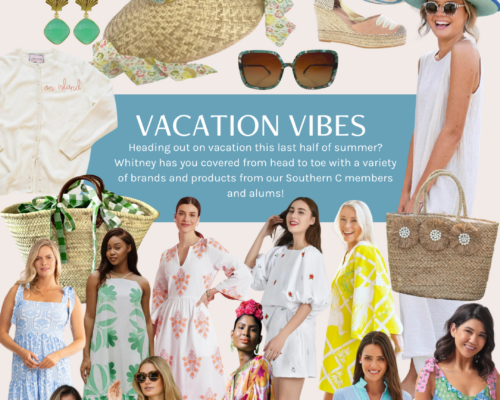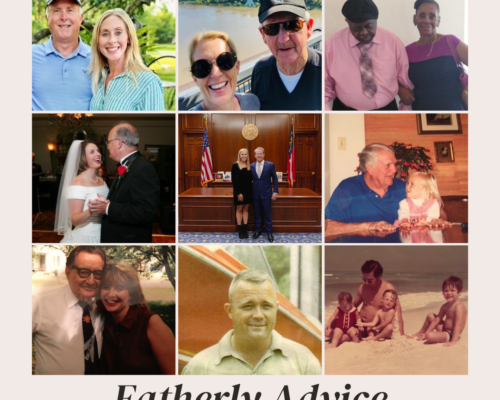From The Desk Of… Deb Johns

I have said it many times, but I need to say it many more. I love interviews. I love talking with and learning about people. They have so much to share and so much to teach us if we are silent and listen, and if we ask the questions. My favorite part of blogging and writing is always the interviews. I meet some incredible, multi layered and incredibly interesting and inspirational people, and I can now add SCOUT owner and founder Deb Johns to that list.
I have loved SCOUT products for many years and honestly do not recall the first piece I owned or where I was first introduced to the brand. It has been a part of my life for so long. Their bags and bins have organized my life over and over and can be seen everywhere in my house from the trunk of my car to my children’s closets to my laundry room and pantry shelves. I am a true follower and lover of all things SCOUT. But… as much as I love my pieces I truly knew nothing about the beginning of the brand, its owner, or the incredible story that needs to be told. This family-owned, DC-based company is so much more than incredibly function and fashionable products. Deb Johns is a brilliant woman with a fabulous career who spotted a need for a product she didn’t see on the market and took her love for all things design and marketing, along with her husband’s knowledge of the gift and manufacturing industry, and created a brand that has not only stood the test of time but grown with it. SCOUT has a firm hold in the world of tote bags and much more in the lifestyle market. Each season we see new colors and patterns but the standard totes, bins, and cooler bags remain the same. The reason, you don’t need to change what is working, you just need to flow with your market to make sure you are staying current and competitive— something SCOUT excels at year after year.
What I think I love most about Deb and her story is how fascinating her journey has been. There is so much more to know about her in addition to her role at SCOUT. Her love for fashion, style, family, food and philanthropy has captured me so much that I have read and reread her answers to my questions multiple times wanting more and more. We share so many of the same passions, and I love how she has been so intentional in the choices she has made. I think you will find you feel the same as she shares so much about what drives her, what she is passionate about, and touches on how her life was touched by cancer and shares how she is working to impact families in her area going through the same.
I most definitely found myself wanting to attend her next pop up, wanting to invite her over for dinner (can she do the cooking?), and spend a lot more time soaking up her creativity and wisdom. I can promise you, you will feel the exact same way after reading her interview.

How did your childhood influence your adult life?
As a child, because we moved all over the country— my father’s job took us from the East coast to the West coast and through the Midwest— I learned to be adaptable, to pay attention to and appreciate all sorts of different environments, and really absorb what was going on around me. Also, as a kid, I was able to take pretty incredible art classes that informed my early interest in design as well as home economics classes in elementary school, which in my case, was sewing. Both taught me that I could take an idea of something that I could create or draw and make it into something three dimensional. I’m useful! And then working with my art, into actual design, was the gateway to what we’re doing now.
As a child, what did you want to be when you grew up?
I really believed I’d be some kind of designer, or in the world of fashion, because from very early on, I was obsessive about sketching and creating. It was all I wanted—to draw. I made all of my own clothes from the time I was in seventh grade. It was fascinating to me to be a part of color and style and trending and construction. And more than that, I loved taking an idea that someone else had, and making it more of my own by way of how I bought the fabric or did the trim or changed the pattern—that became something really fun for me.
What has your professional journey looked like and how did you get to the present day with SCOUT?
My professional journey really began with my education at Cornell, because that’s where I began working in the world of design. I elected to go to Cornell because they offered a Bachelor of Science in textiles and design. It was a very unique program. And part of the program was working in Manhattan. I worked for McCall’s Patterns where I was exposed to all different parts of that business. One aspect was outward PR, which, in those days, was with magazines. I was exposed to Condé Nast and, as part of my final project with McCall’s, I met a woman who asked if I’d be interested in working at Vogue. So it was all connected—starting with my work at Cornell… then transitioning into New York… and then becoming an assistant editor for Vogue out of college… having the opportunity to be there in a time when the sky was the limit in the world of design. It was an incredible time because all the European gateways were opening, all of the intro into the Far East was opening up, and there was so much excitement and money in the world of fashion that made it truly a remarkable era.

How did SCOUT begin and how has it changed along the way?
SCOUT was really an outgrowth of my world of design colliding with my husband’s world of the gift and manufacturing industries. I was doing pop-up design stores here in the District, raising my kids, and consulting with personal wardrobes, when I came across a bag in New York that was an interesting material. I came across it again in Europe. And we realized we could source that material and actually make it into something more beautiful and more desirable. By taking the ingenuity of the factories in the Far East and our own design directives, we were able to take our worlds of experience and expertise and grow a business that has changed over the years. We’ve added new fabrics. We’ve become much more adept at understanding how to navigate business across the web as well as through stores. We’re working with social media. We’re working with much more modern-day-supports that businesses can use to develop more dynamic lines and looks.
Anything you wish you had done along the way or didn’t do?
I’d say our path has been really logical— dynamic, but conservative. We haven’t jumped too big in one season. For me, it’s still really important to bring in people from the outside who are experts in how we grow our business. And I think we could have even done that sooner. But because we’re in DC, which isn’t an obvious design hub, connecting with those people as we grow has been really critical. And I think that we’re on a path to a business development that will be even more exciting going forward.
What is the biggest risk you took along the way and how did that risk pan out?
I think that when you’re an entrepreneur, it’s all about risk. It’s all about realizing that if you don’t go all in with all the resources that you have, then why would anybody else go all in with you? Ben and I are used to putting all of our time and energies into our businesses and also, a lot of our financial commitment is there. So we really feel strongly that as an entrepreneur, by definition, you are risking more than just your nine-to-five work world. You are literally saying: I believe in this on a level that I am willing to put everything I have behind it.
Who are two people who have inspired your journey and why?
My first boss at Vogue, my editor Elisabeth Tretter, was an incredible person. She was a great mentor. She navigated my development and my evolution at Vogue. She just really believed in me. She worked with me for over a year-and-a-half of interviewing while I was still in school to get me into Condé Nast and in the right spot. And she continues to be in my life as someone who I highly respect. In terms of others, I would say my husband. Ben is an incredible partner. He has a belief that we as a team at SCOUT can do anything we set our minds to. He has experienced growth of business before and he understands the highs and lows of growing entrepreneurial companies.
Can you share a high point in your journey and what was that like for you?
I would say the highest points in my journey are when we meet people who are so enthusiastic about the SCOUT product that they almost don’t have the words to express it. And what’s exciting about that is that when people use our products, they tend to want more of it. And they tend to want to give it to everybody they know because they want to share the excitement with people they care about. It’s really fun to see people get enthusiastically involved in the world of SCOUT.

Tell me what you think makes your business different than others.
A couple of things. First, we’re a business in the world of design located in Washington, DC. When we started out, we were very much not the norm. Now I would say there is much more developing in Washington and elsewhere in the country. It used to be just New York and Los Angeles and maybe Chicago or Dallas. But now we’re seeing so many qualified people who want to live in DC and want to work in a small but growing entrepreneurial company. And that’s exciting. I also think we’re different because we’re a predominantly-women company. We’re also young in terms of our average age. We get women who come to us having no idea what they want to do in their world of work and others who are very, very determined to work in a certain capacity for us. The net has been cast wider, and we’re getting such a great array of SCOUT team members.
Tell me, what are five things you love to do?
I absolutely love to cook and I love to cook for people who love to eat. There’s nothing worse than cooking and people going: Oh! There’s carbs! I love to cook in big quantities. Cooking for 100 people is fun for me. But cooking for people who really want to eat is even more fun!
I love the movies and television, anything that is media that keeps me current, that keeps me aware of what’s going on in the world, what people are watching, I need to be watching it, and I love to be entertained in that way. I have it on pretty much 24/7 and I love going to the movies because it’s one of the few times I actually allow myself to not multitask. Although I do eat popcorn while I’m watching so that might be considered a multitask.
I love family time. I’ve always loved my four kids. But now that they’re all adults, it’s a whole new dimension, what they bring to the table in terms of entertainment value. We travel together, share experiences, and we live in a place that they love to come home to. Washington, DC is a place that is becoming more and more dynamic and the fact that our kids all enjoy coming back and being in each other’s lives is a great thing.
Number four is my own immersion. When I travel, I like to travel by myself at times because it allows me to get fully immersed in another world. And this is not an original quote, but visual assault is very important to me. I like to be stimulated by noise and commotion and colors and product. So when I am able to walk a city in Europe— or, I just went to Tokyo in the last year, that was incredibly stimulating—nit’s sensory, it’s eating, it’s looking, it’s touching, it’s all of the things that you want to do in terms of completely absorbing the culture of where you are that could ultimately then lead to great new products.
The other thing that I’m really passionate about is being physically active. I truly have to walk every day. I go to a gym five days a week. I’ve always been an athlete and have always tried to stay in good shape. I’m not a crazy person about it. But I also know that if I want to keep eating at the rate I like to eat, then I’ve got to keep moving.
I hear you host an amazing pop-up shop a few times a year that has a cult following for the people who live near you. Tell me everything.
The pop-ups actually started with my old boss from Vogue. When she left Vogue, she decided to start a small silver jewelry line, manufactured in Mexico with a partner. And she told me, “I need you to sell in Washington. We’re going to do it through home shows.” This was 25 years ago and I took in a bunch of her jewelry. It looked almost like Tiffany links. Beautiful stuff. I sold $10,000 worth in a couple of hours to my friends and neighbors. So I thought, well, why not bring in additional product when I go to Europe, which I’ve done since 1984. Twice a year I go to Paris, Milan, and London, where I see great, fun things. And I figured I could share them with an audience in Washington who may not be able to access those things as easily.
I’ve had various partners in the pop-up. I do it three to four times a year in the pool house, which is on our property. One of my partners brings in vintage jewelry that’s very carefully curated, with very, very fair pricing. That’s key: We like to price things at a very fair price. I also take things out of my clients’ closets that they’re done with. It’s almost a mini rent-the-runway kind of thing. But instead of renting, we sell it. My clients get to clear things out very quickly, and it immediately goes into the hands of my pop-up customers who get to appreciate the second iteration of that fashion—again, at a very reasonable price. I also bring in things that I find in my global travels. We also have a great friend who does granola and she brings that in. It’s a very sought-after recipe and people love that it’s almost only sold in her online business and at our pop-up.
The pop-up is almost like a design laboratory for SCOUT too. When I bring in SCOUT, which I do every season, I get feedback about the line, and people get excited about it. I get that firsthand reaction to the new colors, patterns, sizes, scales. I can also talk to the customer about why it’s valuable in their lives. I can tell them what this product will do for them or who should be receiving it, teachers or neighbors or friends or mothers or whoever. And it gives me an opportunity to convey the line in a one-on-one type of situation that I might not otherwise get.
I think we already touched on this a little bit, but what is your favorite way to unwind?
For me, it is really movies and television. I just absolutely love it. Or walking the streets of New York City. That’s the other one. Those are my two. And… I still love the sun. I still sit in the sun. But I can’t love it as much as I used to because those lifeguard days kind of nuked my skin. But that would be another one.

As the wife of a cancer patient, I am so connected to your commitment to cancer patients and their families. Can you share the story behind the Georgetown emergency family relief fund and the annual GoBo party?
Our son, Bo, at 11 years old, was diagnosed with large B cell lymphoma. He had cancer in his tonsil. He had a routine tonsillectomy. We found out later that the tonsil itself was not so routine looking. It was heavier and larger. He had gone back to school and a couple of days later I was in Europe at a meeting and Ben called me and said, “Bo’s in the hospital, he’s got cancer.” And I was on the next flight back.
Fortunately, living in Georgetown and having the best pediatric care for his cancer in Georgetown, Bo was already luckier than most. We had incredible support from our neighbors and family who immediately asked, “What can we do for Bo?” And we said, “Well, he has everything he needs.” Ben and I could alternate nights there. The family could visit him easily. Friends could come see him. But what we realized very quickly was that a lot of kids in that ward were not so lucky and their families lived further away. They also might not have had the level of insurance that we had. They were simply not nearly as supported.
So we went to this group of families who reached out to us, and we said that we’d love to support this tiny little fund that the social workers at Georgetown had access to—the most they’d ever had in the fund was $1,000. It was really a discretionary fund for families who found themselves dealing with this brand new club that no one wants to belong to. But when you are, you have a choice: You either pull the covers over your head or you meet it head on. And Bo, on the first day in the hospital, asked me, “Mom, do I have cancer?” And I answered, “Yes, you do. Now. You have to decide. Are you going to get it… or is it going to get you?” And he goes, “Mom, I’m going to get it!” And we said, okay, let’s keep this positive full-steam-ahead attitude.
Long story short, we sent out a letter to 1,200 people talking about Bo’s cancer and treatment. And we asked for donations to honor Bo while he was fighting his fight in the hospital. And money started pouring in. And every time I would come in on a morning that I hadn’t been there the night before because Ben had been there, Bo would ask, “Mom, did more money come in for the kids?” It actually motivated Bo. And I’d say, “Bo, every day you’re in here, we’re getting more money for kids who need that support.”
So we’ve put about three quarters of a million dollars through the fund over the last 15 years. We are not trying to raise millions of dollars every season. We’re trying to raise $50,000 to $75,000 because we feel like that’s a number that the social workers at Georgetown in pediatric oncology can manage. If it was millions, it would be a whole different deal. We also want to be around indefinitely. We don’t believe in hitting and running.
The other exciting part for us is the GoBo theme party we do every year. It’s a real celebration of life and fun. And now there’s a second generation participating. All of our kids are of age. They’ve all rallied their friends. Many of our team at SCOUT come and support it and help out with it too. So it’s become a community, multigenerational family event. And we always have a fun theme. We decorate. We come dressed in costume. And the food reflects the theme.
We have no plans of stopping. I actually had somebody at the fifth year mark ask, “So, aren’t you done?” And I said, “Is cancer done?”
Isn’t she just incredible? You can read more about SCOUT’s dedication to creating bags with function and fashion and to shop all of their amazing products on their website. As I said above, I have owned so many SCOUT bags over the years and will continue to support and shop this fabulous brand. Knowing so many details about the creator only endears me to her products even more than before.
Don’t you agree?
*Excited to have SCOUT as our Swag Market partner for the 2020 Summit… a great brand with such an inspiring and creative leader!





Leave a Comment